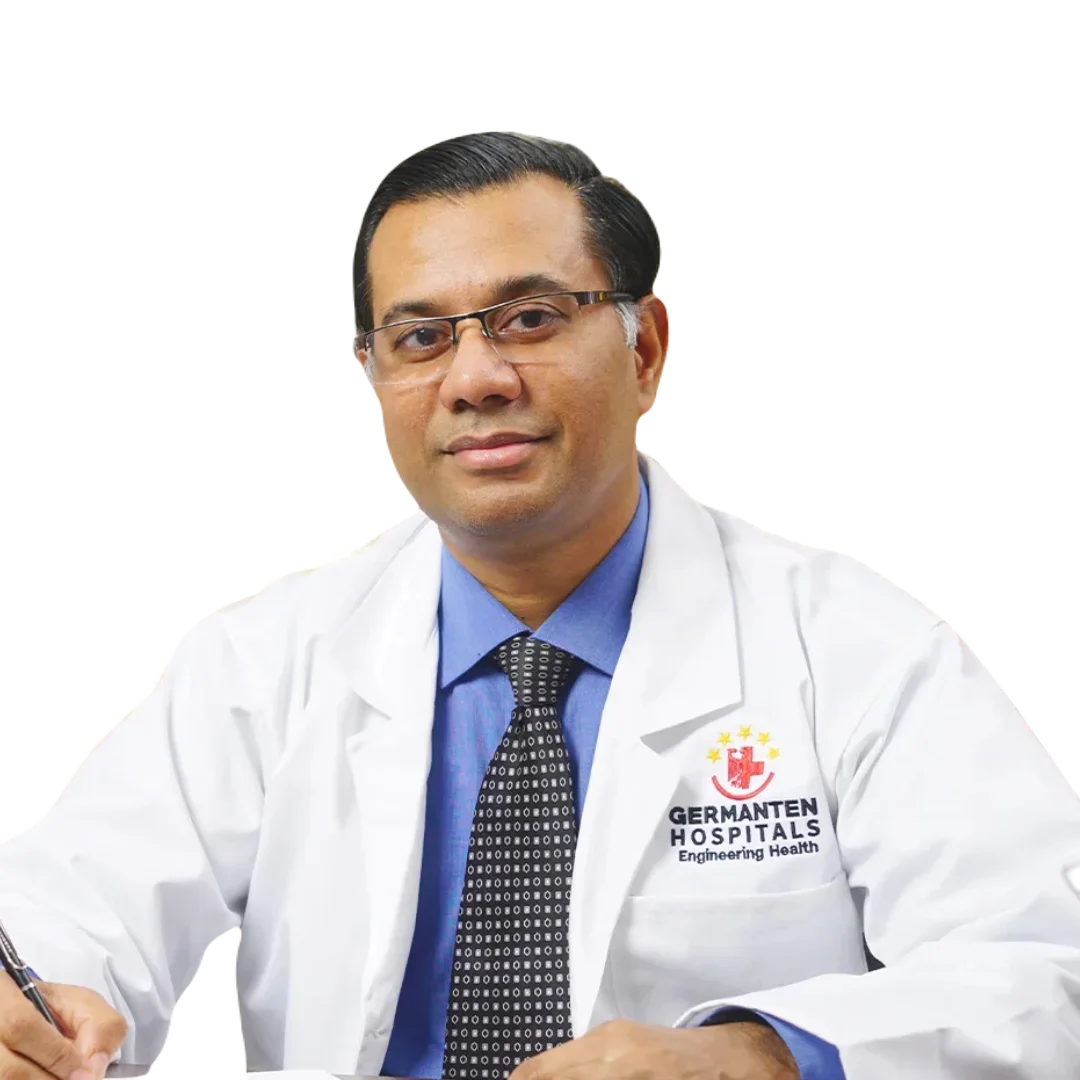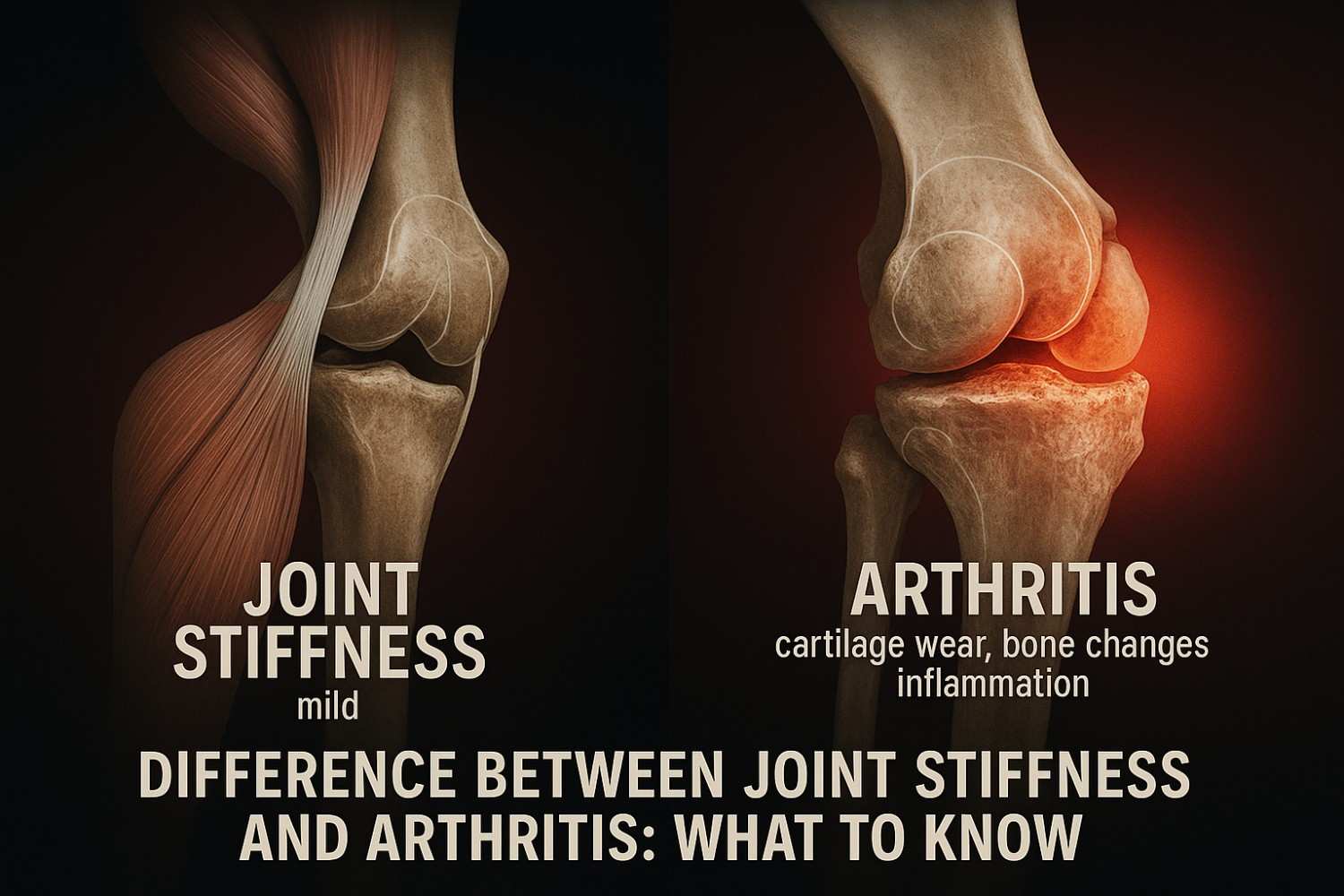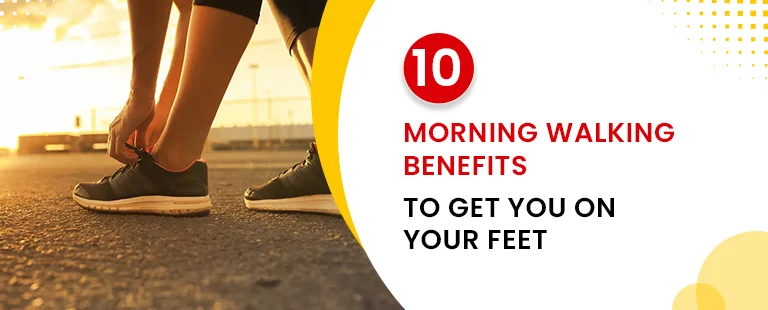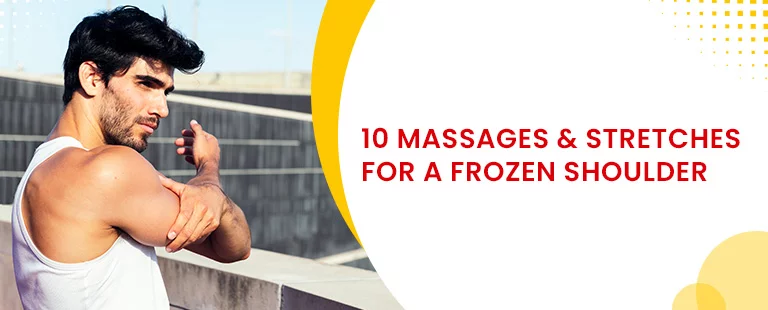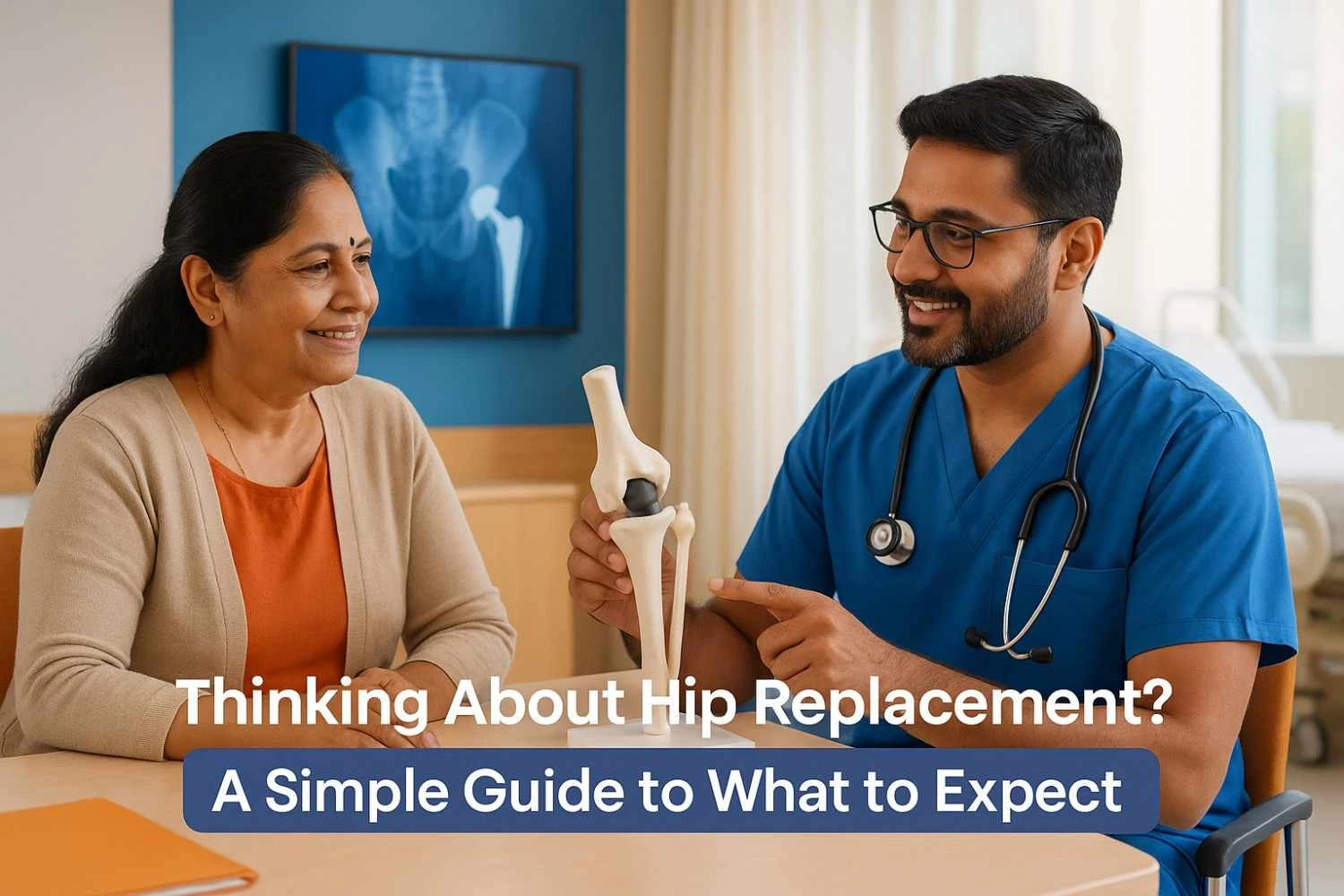Waking up with a stiff knee or finding it difficult to open a jar because your fingers feel tight is a common experience. For many of us in Hyderabad, we might dismiss it as a sign of getting older or overdoing it the previous day. But what if that stiffness is a quiet warning sign of something more? How do you know if it's just temporary discomfort or the beginning of a chronic condition like arthritis?
Understanding the difference is crucial. Joint stiffness is a symptom, a feeling of tightness that makes movement difficult. Arthritis, on the other hand, is a disease with a group of over 100 conditions that cause inflammation and damage to the joints themselves.
At Germanten Hospitals, a leading orthopedic hospital in Hyderabad, we believe that knowledge is the first step to a healthy, active life. This guide will help you understand your body's signals, differentiate between simple stiffness and arthritis, and know when it’s time to seek an expert orthopaedic consultation in Hyderabad.
Understanding Joint Stiffness: Is It Just a Symptom?
Before we jump to conclusions, it's important to understand what joint stiffness really is. It’s not just about pain; it’s about the sensation that your joint’s movement is limited or requires extra effort. You might be able to move the joint fully, but it feels like you’re pushing against something.
What Does "Joint Stiffness" Actually Mean?
Medically, joint stiffness is the perceived feeling of tightness in a joint. Think about how a door hinge gets rusty and becomes hard to move. That’s similar to what happens in your joints. This feeling is often most noticeable after a period of inactivity, like waking up in the morning or getting up after sitting for a long time at your desk.
Common Causes of Joint Stiffness That Aren't Arthritis
The good news is that not every instance of joint stiffness means you have arthritis. Many other factors can cause temporary stiffness:
- Overuse or Minor Injury: Did you spend the weekend gardening or playing cricket? Repetitive motions or a minor sprain can cause inflammation and stiffness that usually resolves in a few days.
- Prolonged Inactivity: Sitting in one position for hours whether in traffic on the PV Narasimha Rao Expressway or at your office can cause your joints to feel stiff when you finally move. This is often called the "gel phenomenon" and typically eases with movement.
- Other Illnesses: Systemic illnesses like the flu or even COVID-19 can cause temporary body aches and joint stiffness.
- Bursitis or Tendinitis: Inflammation of the bursa sacs (bursitis) or tendons (tendinitis) due to overuse can also lead to a stiff and painful joint.
If your stiffness is short-lived and linked to a specific activity, it’s likely not a chronic issue. However, if it becomes a persistent part of your daily life, it’s time to look deeper.
Defining Arthritis: A Closer Look at the Disease
Unlike stiffness, arthritis is a formal diagnosis. The word itself gives us a clue: arthro- means 'joint' and -itis means 'inflammation'. Arthritis is a family of over 100 diseases where the primary symptom is chronic joint inflammation, leading to pain, swelling, and eventually, joint damage if left untreated.
Let's break down the two most common types we see in our patients.
Osteoarthritis (OA): The "Wear and Tear" Arthritis
Osteoarthritis is the most common form of arthritis, affecting millions of people. Think of it as the result of long-term "wear and tear" on your joints.
- What Happens: The protective cartilage that cushions the ends of your bones gradually wears down over time. As the cartilage thins, the bones can start to rub against each other, causing pain, stiffness, and a grating sensation. Your body might also form tiny bone growths, called bone spurs, which can further limit movement.
- Common Causes: Age is a major factor, but so are genetics, previous joint injuries, repetitive stress on a joint, and being overweight, which puts extra pressure on your knees and hips.
-
Affected Joints: OA typically affects the large, weight-bearing joints like the knees and hips, as well as the spine and the small joints of the hands.
Rheumatoid Arthritis (RA): When Your Body Attacks Itself
Rheumatoid arthritis is a different kind of beast. It’s an autoimmune disease, which means your body's own immune system gets confused and mistakenly attacks your healthy tissues.
- What Happens: In RA, the immune system targets the lining of your joints (the synovium). This attack causes chronic inflammation that leads to swelling, pain, and eventually, the erosion of both cartilage and bone.
- A Systemic Disease: RA isn't just limited to the joints. Because it’s an autoimmune condition, the inflammation can affect your entire body, including organs like the heart, lungs, and eyes.
-
Affected Joints: RA often affects the smaller joints of the hands and feet, and it has a very specific characteristic: it’s usually symmetrical. This means if your right wrist is affected, your left wrist probably will be too.
The Key Differences: How to Tell Stiffness and Arthritis Apart
So, how can you tell the difference based on your symptoms? Paying attention to the details of your stiffness and pain can provide powerful clues.
The Morning Stiffness Clock: Your Most Important Clue
The duration of morning stiffness is one of the most telling signs an orthopedic specialist looks for.
- Osteoarthritis (OA): The stiffness is typically brief. You might feel it when you wake up, but it usually gets better within 30 minutes of moving around.
-
Rheumatoid Arthritis (RA): The morning stiffness is much more severe and prolonged. It often lasts for more than an hour, and sometimes for several hours, making it difficult to start your day.
Pain Patterns: When Does It Hurt?
- Osteoarthritis (OA): The pain tends to get worse with activity or as the day goes on. Your joints might feel achy after a long walk or a busy day.
-
Rheumatoid Arthritis (RA): Interestingly, gentle movement and activity can often help improve the pain and stiffness associated with RA. The pain is often worse after periods of rest.
Joint Involvement: One Side or Both?
- Osteoarthritis (OA): OA often starts asymmetrically, meaning it might affect your right knee but not your left.
-
Rheumatoid Arthritis (RA): RA is known for its symmetrical pattern. It typically affects the same joints on both sides of your body at the same time (e.g., both hands, both feet).
Beyond the Joints: Spotting Systemic Symptoms
- Osteoarthritis (OA): The symptoms are generally confined to the affected joints. You won't typically experience body-wide symptoms.
-
Rheumatoid Arthritis (RA): Because it’s a systemic disease, RA can come with other symptoms like profound fatigue, a general feeling of being unwell, low-grade fever, and unexplained weight loss.
Comparison Table: Joint Stiffness vs. Arthritis at a Glance
For a quick summary, here’s a table to help you compare the symptoms.
When to Seek an Orthopaedic Consultation in Hyderabad
Self-assessment is a good start, but it’s no substitute for a professional diagnosis. Ignoring persistent joint symptoms can lead to irreversible damage, especially with inflammatory types of arthritis.
Don't Ignore These Warning Signs
It's time to see a doctor if you experience any of the following:
- Joint symptoms (pain, stiffness, swelling) that last for three days or more, or if you have several episodes in a month.
- Morning stiffness that consistently lasts longer than an hour.
- Pain that is severe enough to interfere with your daily life.
- The joint is also red, warm to the touch, and visibly swollen.
-
You have systemic symptoms like unexplained fever, fatigue, or weight loss.
Why a Specialist Matters: The Diagnostic Process
An accurate diagnosis is the foundation of effective treatment. When you visit an orthopedic surgeon in Hyderabad, they will conduct a thorough evaluation to get to the root of your problem. Here’s what you can expect at Germanten Hospitals:
- Detailed Medical History: Your doctor will ask about your symptoms, when they started, your family history, and your lifestyle. Being prepared to discuss these details will help your doctor build a clear picture of your condition.
- Physical Examination: The doctor will carefully examine your joints, checking for swelling, tenderness, warmth, and your range of motion. They may ask you to walk or move in certain ways to assess your joint function.
- Advanced Imaging: To see what’s happening
inside your joint, your doctor may order imaging tests.
- X-rays are excellent for showing cartilage loss, bone spurs, and bone damage common in OA and advanced RA.
- MRI scans provide a more detailed view of soft tissues like cartilage and can detect early inflammatory changes.
-
Blood Tests: For suspected RA, blood tests are crucial. They can identify markers of inflammation (like ESR and CRP) and specific autoantibodies (like Rheumatoid Factor and anti-CCP) that are hallmarks of an autoimmune disease.
Your Path to Relief: Modern Arthritis Treatment in Hyderabad
Once a diagnosis is confirmed, a personalized treatment plan can be created. The goal of arthritis treatment in Hyderabad is to manage pain, reduce joint damage, and improve your quality of life.
Conservative First Steps: Lifestyle and Medication
Treatment almost always begins with conservative, non-invasive methods:
- Physical Therapy: A tailored exercise program can strengthen the muscles around your joints, improve flexibility, and reduce pain.
- Weight Management: Losing even a small amount of excess weight can significantly reduce the stress on your knees and hips, providing substantial pain relief.
- Medication: Depending on your diagnosis, your doctor may recommend over-the-counter pain relievers, anti-inflammatory drugs (NSAIDs), or powerful disease-modifying drugs (DMARDs) for RA that can slow or stop the disease process.
Advanced Non-Surgical Options
When initial treatments aren't enough, we offer more advanced options. Injections of corticosteroids can provide powerful, targeted relief from inflammation. At Germanten, we are also at the forefront of regenerative medicine, offering innovative treatments like Stem Cell Therapy to help the body heal itself.
When Surgery is the Best Solution: The Germanten Advantage
For patients with end-stage arthritis, where cartilage is gone and pain is severe, surgery can be life-changing. If conservative treatments no longer provide relief, it may be time to consider joint replacement surgery in Hyderabad. This procedure involves replacing the damaged joint with a high-tech artificial one, with the goal of eliminating pain and restoring mobility.
The Future is Here: Robotic-Assisted Joint Replacement in Hyderabad
At Germanten Hospitals, we are proud to be pioneers in orthopedic technology. We were the first in Telangana to introduce German precision robotic technology for joint replacements.
This is where our commitment to "perfection and precision" truly shines.
Robotic-assisted joint replacement in Hyderabad allows our surgeons to place the new joint with unmatched accuracy. This precision leads to better outcomes, a more natural-feeling joint, faster recovery times, and a durable solution that can last for many years. It’s the ultimate fusion of human expertise and technological excellence.
Your Next Step: Take Control of Your Joint Health
Living with joint stiffness and pain can be frustrating and limiting. But you don't have to accept it as a normal part of life. The first and most important step is getting an accurate diagnosis. Don't guess, and don't wait for the pain to become unbearable.
If you're searching for an "orthopedic clinic near me Hyderabad" or need an expert opinion, our team is here to help. Schedule an orthopaedic consultation in Hyderabad with the leading experts at Germanten Hospitals. Let us help you understand your symptoms and create a personalized plan to get you back to living a full, active, and pain-free life.
Ready to take the first step? Call us today at +91 9989635555 to book your appointment.
